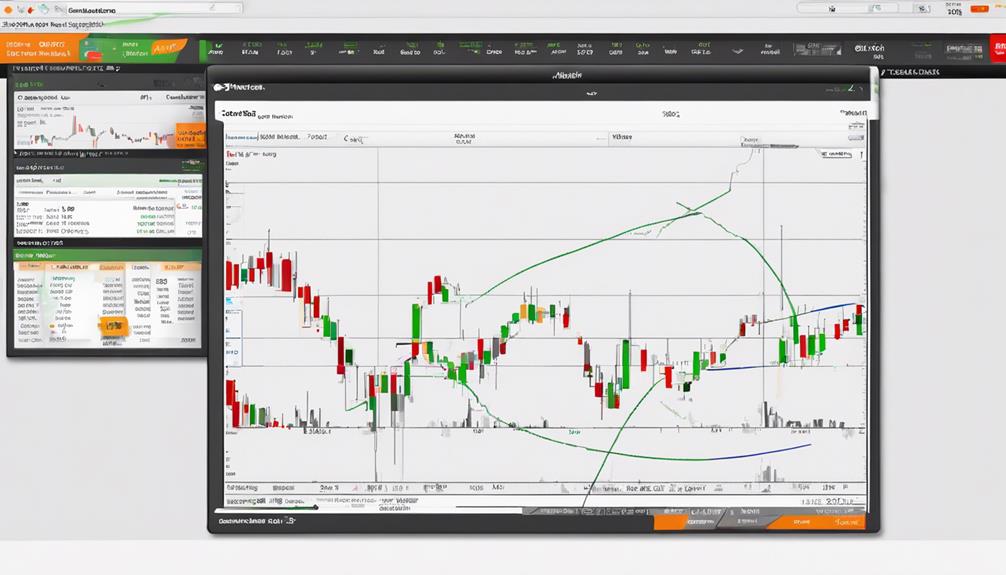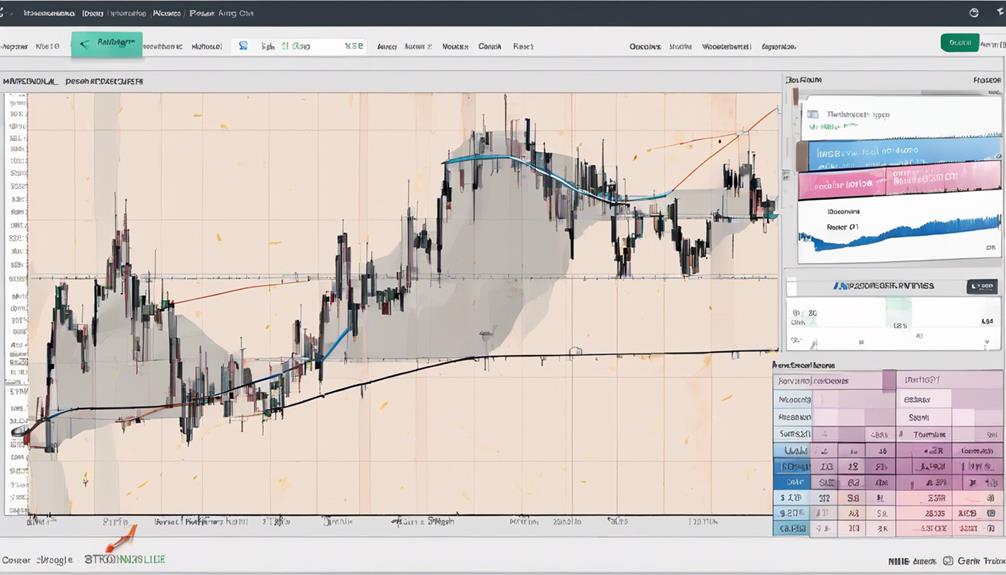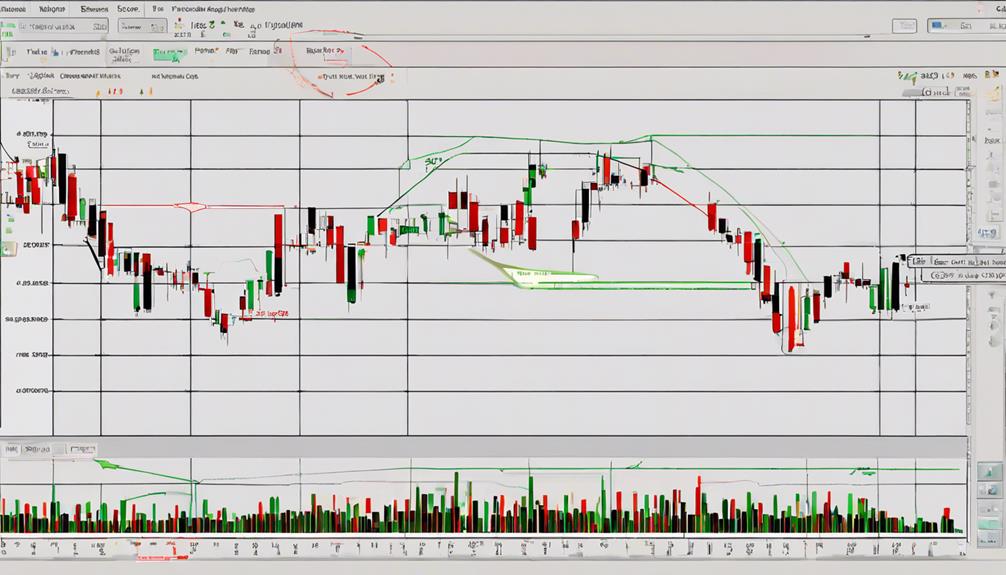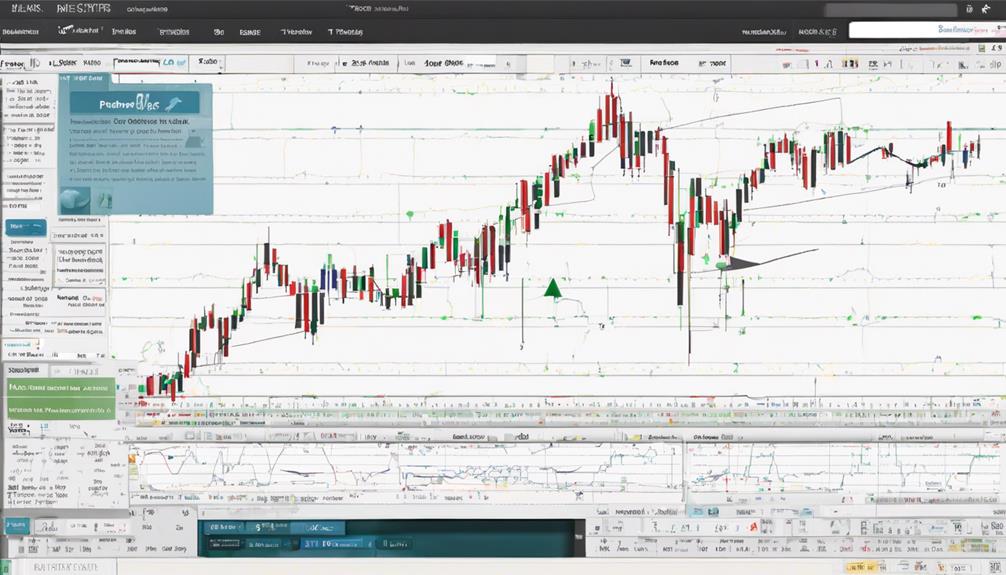Understanding the Parabolic SAR indicator can significantly elevate a trader's ability to navigate the complexities of the financial markets with greater precision. This technical tool offers a methodical approach to identifying potential shifts in price direction and strategically timing entry and exit points.
By grasping the intricacies of this indicator, traders can gain a competitive edge in their decision-making process and ultimately optimize their trading outcomes. The Parabolic SAR's versatility and effectiveness in various market conditions make it a valuable asset worth exploring further.
Benefits of Parabolic SAR Indicator
The Parabolic SAR indicator stands out as a valuable tool for traders seeking to identify potential trend reversals and optimize their entry and exit points in dynamic markets. This technical analysis tool provides traders with clear signals that help them make informed decisions about when to enter or exit trades based on the prevailing trend in asset prices.
By plotting points above or below an asset's price, the Parabolic SAR indicator offers a visual representation of the trend direction, making it easier for traders to spot potential reversals. The indicator's ability to adapt quickly to changing market conditions makes it particularly useful for traders navigating volatile markets.
However, traders should exercise caution when using Parabolic SAR in sideways or ranging markets, as it may generate false signals during such times. Overall, the Parabolic SAR indicator's simplicity and versatility make it a valuable asset for traders looking to enhance their trading strategies and improve their overall success rate.
Practical Applications of Parabolic SAR

With its ability to pinpoint potential trend reversals and establish precise entry and exit points, the Parabolic SAR indicator serves as a practical tool for traders navigating dynamic market conditions. When applied effectively, the Parabolic SAR offers various practical applications:
- Identifying Trend Reversals: Traders can rely on Parabolic SAR to recognize potential shifts in market trends, helping them make informed decisions on when to enter or exit trades.
- Setting Trailing Stop-Loss Orders: Utilizing the Parabolic SAR, traders can implement trailing stop-loss orders to manage risk effectively as the indicator dynamically adjusts based on price movements.
- Generating Buy or Sell Opportunities: The indicator's dots appearing above or below price bars can signal potential buy or sell opportunities, aiding traders in making timely decisions.
- Enhancing Trading Signals: By combining Parabolic SAR with other indicators, traders can strengthen their trading strategies, leading to more reliable signals and improved risk management practices.
Parabolic SAR Settings and Strategies

Parabolic SAR settings and strategies play a crucial role in optimizing trading decisions and enhancing overall performance in dynamic market environments. The standard Parabolic SAR parameters typically commence with an acceleration factor of 0.02, which traders can fine-tune to adjust sensitivity according to their trading preferences.
Different timeframes necessitate specific settings to improve the quality of Parabolic SAR signals. Popular strategies involving Parabolic SAR include EMA Crossover, MACD, Scalping, and ADX combinations.
Traders often utilize various approaches like the Double Parabolic SAR Strategy, EMA Crossover and Parabolic SAR Strategy, Parabolic SAR and MACD Strategy, Parabolic SAR Scalping Strategy, and ADX + Parabolic SAR Strategy to leverage the Parabolic SAR indicator effectively.
Using Parabolic SAR for Risk Management

Utilizing the Parabolic SAR indicator effectively enhances risk management strategies in trading activities. This tool assists traders in setting trailing stop-loss orders based on trend reversals, thereby managing risk more efficiently. By providing clear entry and exit signals, the Parabolic SAR offers valuable insights into potential trend changes, helping traders mitigate risks.
Additionally, traders can utilize this indicator to determine optimal stop levels, reducing potential losses during market fluctuations. The visual cues offered by the Parabolic SAR also aid in adjusting stop-loss levels as the trend progresses, enhancing risk management strategies. Through a systematic approach to controlling risk and protecting profits, traders can leverage the Parabolic SAR to improve their trading activities significantly.
- Implement trailing stop-loss orders based on trend reversals.
- Utilize entry and exit signals for effective risk mitigation.
- Determine optimal stop levels to minimize losses.
- Use visual cues to adjust stop-loss levels and enhance risk management.
Enhancing Trading Precision With Parabolic SAR

Enhancing trading precision can be achieved through the strategic integration of the Parabolic SAR indicator into trading decisions, offering valuable insights into price movements and potential entry/exit points.
The Parabolic SAR assists traders in identifying trend reversals by visually representing price movements, indicating optimal times to enter or exit trades. By utilizing the indicator's signals, traders can set efficient stop-loss orders and enhance risk management practices.
This tool's straightforward yet effective nature makes it suitable for traders of all experience levels, aiding in making informed trading choices. Additionally, combining the Parabolic SAR with other technical indicators can further refine trading strategies, leading to increased accuracy in trading outcomes.
How Can Learning the Parabolic SAR Indicator Benefit My Trading Strategy?
Learning to use the parabolic SAR indicator in intraday trading can greatly benefit your trading strategy. This powerful tool helps traders identify potential trends and determine optimal entry and exit points. By incorporating the parabolic SAR indicator into your trading plan, you can make more informed and strategic decisions.
Frequently Asked Questions
Is Parabolic SAR a Leading Indicator?
Parabolic SAR is not a leading indicator; it lags due to its reliance on past price data. While it helps identify trend reversals, its delayed nature requires traders to supplement it with leading indicators for comprehensive market analysis.
Is Parabolic SAR Good for Scalping?
Parabolic SAR is effective for scalping due to its ability to capture short-term price movements swiftly. Scalpers rely on the indicator to identify quick trends, enabling rapid entry and exit strategies for short-term trading opportunities.
What Is the Most Useful Indicator in Trading?
In the intricate landscape of trading indicators, the moving average stands out as a beacon of reliability. Its ability to smooth out price fluctuations and reveal underlying trends makes it a cornerstone for many traders' analytical toolkits.
What Is the SAR Trend Strategy?
The SAR trend strategy utilizes Parabolic SAR to identify trend reversals. Traders interpret SAR dots above bars as a downward trend signal and below bars as an upward trend signal. Effective for entry/exit points when combined with other indicators.
Conclusion
In conclusion, mastering the Parabolic SAR indicator is crucial for traders seeking to navigate the complexities of the financial markets.
By incorporating this tool into their trading strategies, individuals can identify potential reversals, determine optimal entry and exit points, and effectively manage risks.
Just as a skilled navigator uses a compass to chart a course through turbulent waters, traders can utilize the Parabolic SAR to steer their way through the unpredictable currents of the market.
